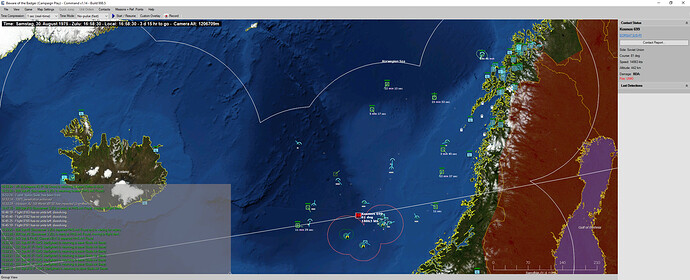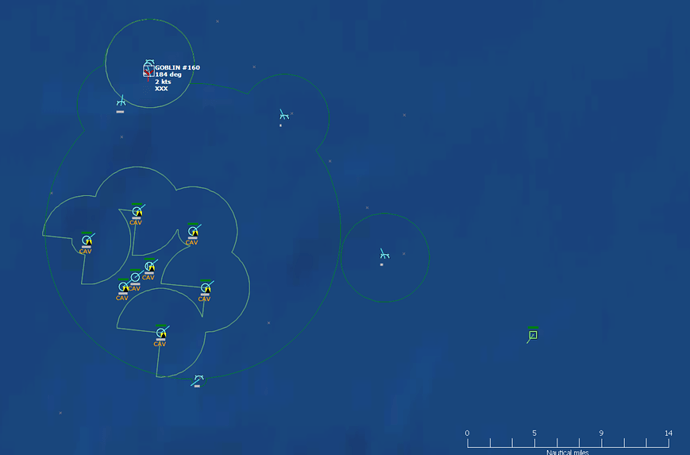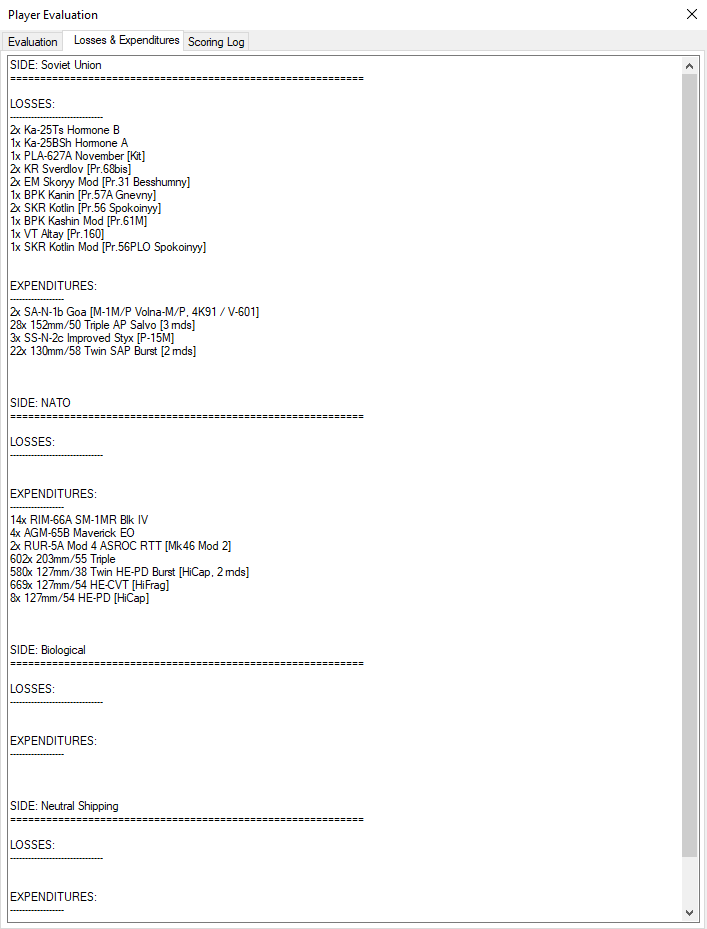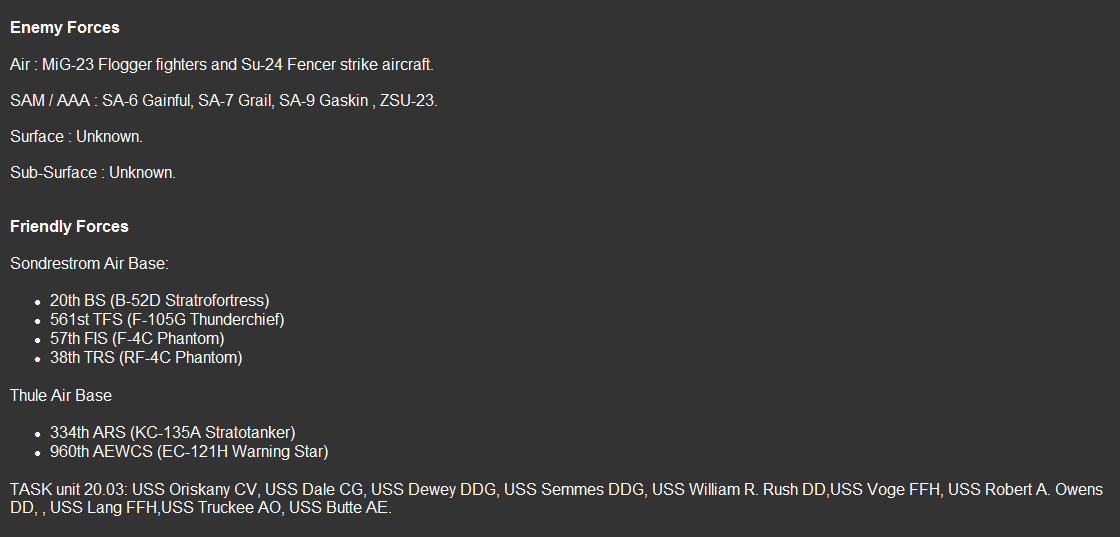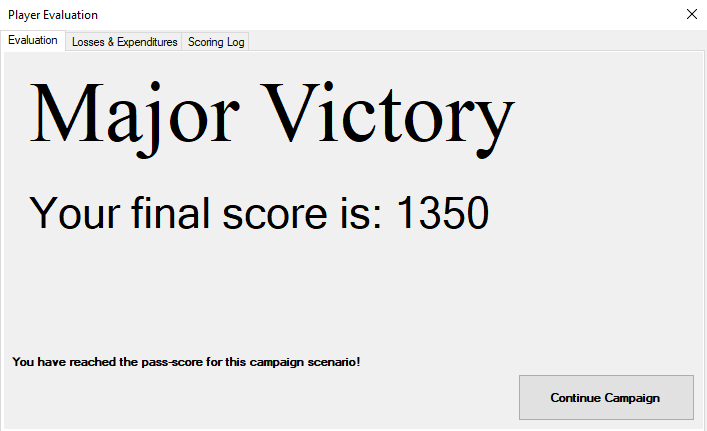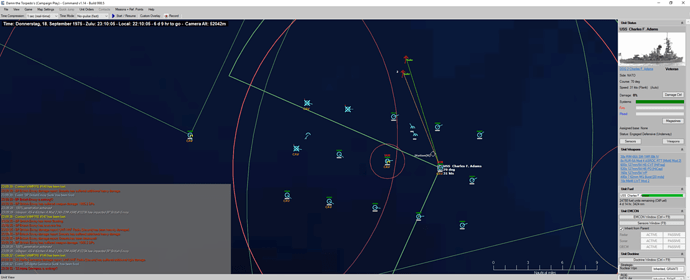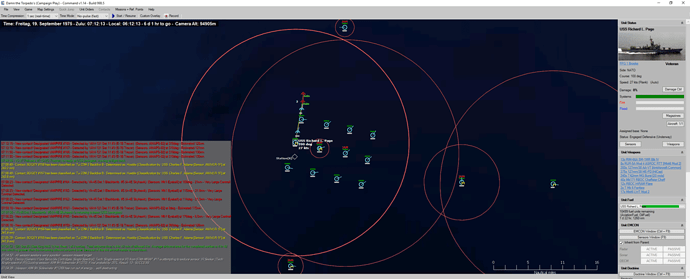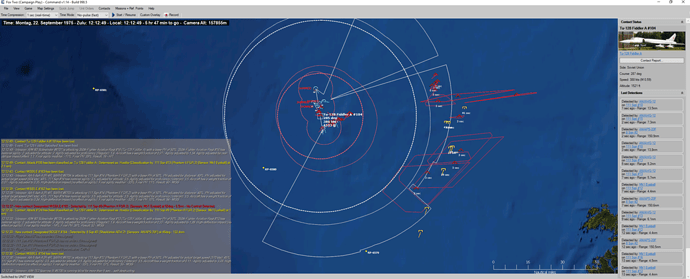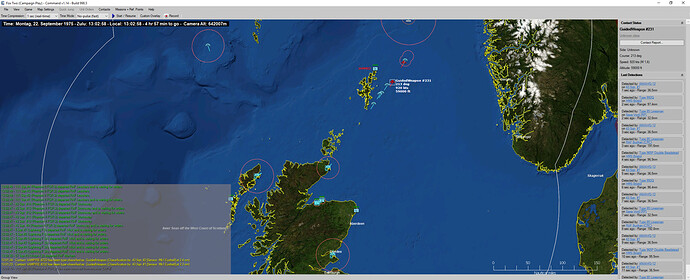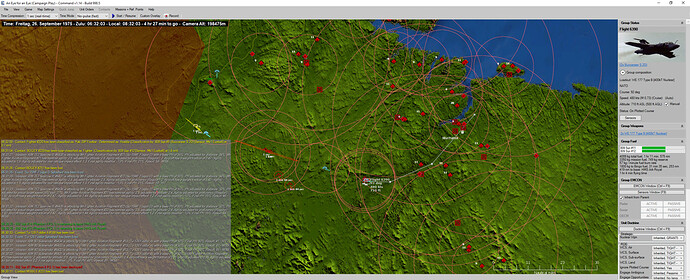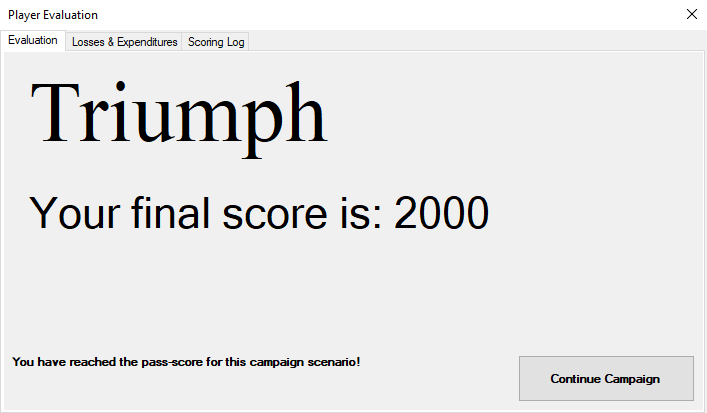Scenario 7 - The Mighty “O”
The Soviets have taken Iceland and are setting up aviation facilities. If they are allowed to deploy bombers to Iceland, then NATO convoys in the North Atlantic are under direct threat. We are therefore to participate in a combined USN/USAF operation to disable the airfields at Reykjavik.
150 NM south-west of Iceland the USS Oriskany Carrier Battle Group steams within striking range. The Oriskany is an old Essex-class carrier of WWII vintage. She is too small to carry the latest aircraft but still carriers a large and powerful air group on her deck.

Carrier Air Wing 9 consists of 24 F-8J Crusader fighters, 30 A-7B Corsair II attack aircraft, 4 RF-8G Crusader recon aircraft, 4 E-1B Tracer AEW aircraft and 8 SH-3H Sea King ASW helicopter. In addition, there is another Sea King and two Seasprite helicopters on the escorts of the carrier.

The USAF contingent for the operation is based at Sondrestrom Air Base on western Greenland and consists of 12 B-52D Stratofortress bombers, 16 F-4C Phantom II fighters, 12 F-105G Thunderchief Wild Weasels and 4 RF-4C Phantom II recon aircraft. The 725 NM from Sondestrom to Reykjavik is no problem for the B-52, but the fighters will require tanker support to get there. For this purpose, 10 KC-135A from Thule Air Base are available. In addition, Thule supplies some EC-121 for AWACS support.
Duration of this operation is just 6 hours, so there is not enough time to re-arm strike aircraft. Every strike aircraft will be able to fly a single mission only. Our general tactic will to launch some small strikes first from Oriskany to destroy radar sites on Iceland. This should make subsequent missions less likely to be intercepted. Then the USAF B-52 with support will destroy the runways at Keflavik NAS and Reykjavik airport. And finally, the remaining aircraft from Oriskany will destroy hangars and aircraft on the ground.
First we launch our tankers from Thule, because they will need 2 hours to get on station. Over the Denmark Strait, 200 NM west of Iceland and just outside of enemy radar range, we set up 3 tanker tracks. This is where the aircraft from Sondrestrom will refuel before descending to low level and approaching Iceland. Two tankers are already airborne, 4 will launch right now, 2 in 1.5 hours and 2 in 3 hours.
First lets launch some recons. A RF-8 from Oriskany and a pair of RF-4C from Sondrestrom. We need to know which airbase has aircraft on the ground, as well as if there are additional radar sites along the coasts.
There is a flurry of activities developing over Iceland, as our Tracer and Warning Star aircraft track 9 hostile aircraft taking off from Kevlafik.
The RF-8 passes right below 4 MiG-23 as it approaches Kevlafik, but since it screams at low level and it is a pitch dark night it remains undetected. As it lights its afterburner and starts its run over the airbase, the Crusader detects 38 aircraft on the ground, but is subsequently shot down by an SA-6.
Time to launch the first airstrikes. The Long Track radar sites on the western and southern coasts of Iceland need to go. I launch two groups with two Corsair and two Crusader escorts each.
A Be-12 Mail patrol aircraft heads out towards our fleet and two Crusaders launch to shoot it down.
The western radar site get struck by two Corsair with 36 Mk-82 bombs and is destroyed.
The southern radar site is struck with cluster bombs but is not destroyed. But it seems to be not emitting.
Meanwhile the two RF-4C arrive at the tanker track and take on fuel.
On its way back, two of the escort Crusaders are attacked by MiG-23. But lighting their afterburners, they manage to pull away at low level. I don’t want to engage in dogfights unless absolutely necessary. The Cursaders land back at Oriskany on fumes.
Two MiG-23 follow our aircraft back to the fleet. USS Dale engages the fighters with SM-1ER SAM and takes them down, but not before one of our Sea King helicopters is destroyed.
Even worse, two missiles rise from the Keflavik area. The MiGs must have phone in our position and these must be Shaddock anti-ship missiles.
A pair of Crusaders that is airborne intercepts the missiles and manages to shoot one down, but they cannot catch up with the second one. Fortunately the other gets taken down by USS Dale with a Standard SAM.
More Bogeys are inbound, fast and at low level. These are probably Su-24 that are being reported at Keflavik. The last two ready Crusaders from Oriskany launch to intercept.
Things look bad. One Su-24 was shot down by a Crusader, but not before it could launch its missiles against the fleet. More aircraft and Bogeys launch from Keflavik. Our ships hold their ground with SAMs for the moment.
Eventually, 8 Su-24 are shot down, but a Crusader is lost and USS Dale and USS Dewey get damaged by an AS-9 ARM missiles. Fortunately their SM-1ER SAM systems remain operational. All in all, we came away lucky.
The damaged USS Dale must defend against another land-launched ASM attack. All SSC-1 Sepal are shot down.
Another strike is inbound against the Oriskany Battle Group: 5 Su-24 escorted by 2 MiG-23. Oriskany manages to put up 6 Crusaders. This time, all enemies are shot down before any missiles can be launched, for the loss of a single F-8.
It is time to end this. The USAF armada from Sondrestrom (12 B-52, 12 F-105 and 16 F-4) is inbound to the tanker tracks.
Tanking complete and the strike force is inbound to Iceland. A flight of Phantom flying ahead is about to engage 2 MiG-23.
4 MiGs have been shot down, now the Thunderchiefs launch Shrikes against the defenses around Keflavik.
3 SA-6 sites are hit and disabled.
The first 4 B-52 unload over one of the runways of Keflavik, while 4 F-105G launch Shrikes against AAA sites. The next 4 B-52 drop over Keflavik’s second runway, destroying many nearby parked aircraft. Finally 4 B-52 attack Reykjavik airport with two drops on the airport’s two small runways.
At the end of the attack, all of Iceland’s reinforced runways are heavily damaged. Soviet air operations out of Iceland have been put to a stop. The USAF head back to Sundrestrom with the loss of a single Phantom in air-air combat.
Next it is the Navy’s task to clean up on the ground. Oriskany prepares to launch 16 Corsair.
While the USAF heads back to the tankers, the Oriskany strike is inbound. Apparently the runways at Keflavik were not destroyed completely as two new Bogeys have taken off (fighters only need short stretches of undamaged runway). I quickly launch 4 Crusaders from Oriskany to provide escort.
Sweeping in behind the two MiGs undetected, both or shot down by Crusaders.
At first, two Corsair attack the two surface contacts off the coast of Iceland. They turn out to be Nanuchka-class missile boats and both are sunk with a single Walleye glide-bomb each.
A flight of Corsair launches a salvo of 8 Walleyes against the hangars at Keflavik. Next follows a salvo of 6 Walleyes against ammo bunkers and the fuel depot. And finally, 4 Corsair go in at low level and attack parked aircraft with Snakeyes and cluster bombs, covered by 4 Corsair shooting Shrikes.
Keflavik NAS is left a smoking wreck as all aircraft return to the carrier.

I did take the defense of the carrier battle group a bit on a light shoulder, which resulted in the loss of two Sea King helicopters and two escort ships being damaged. Fortunately the ships performed well and managed to avert greater damage to our fleet.


